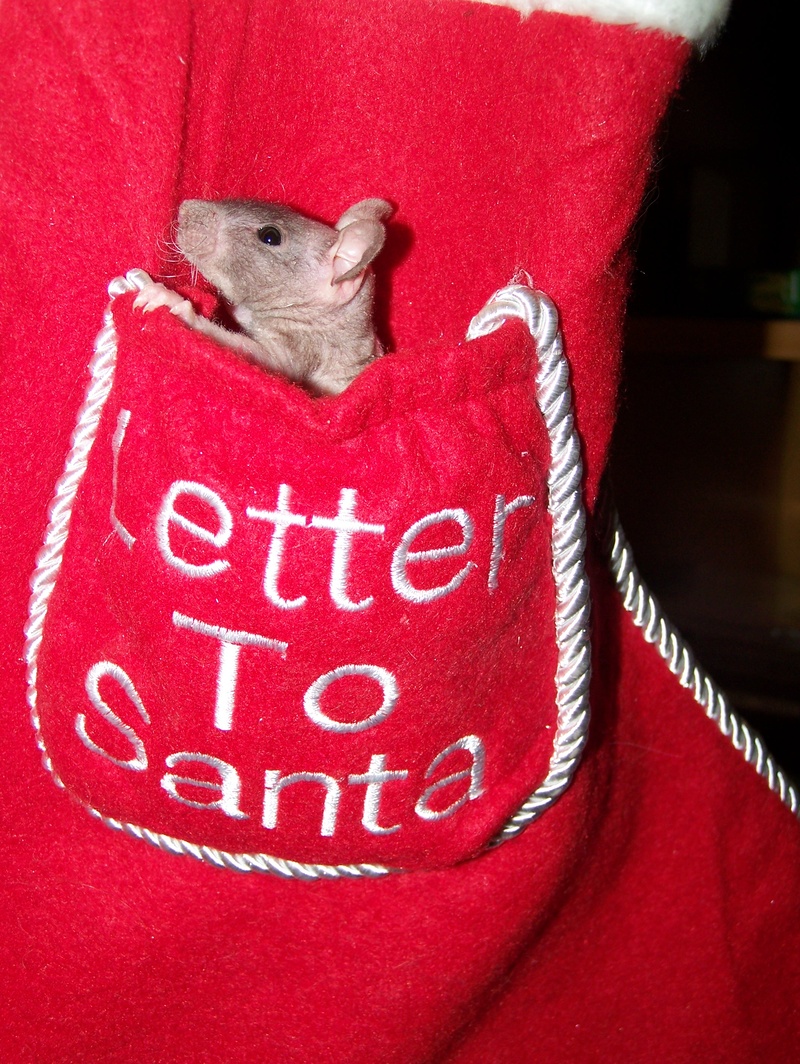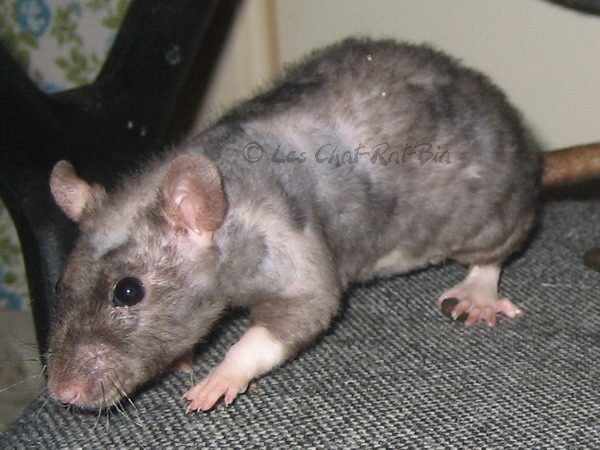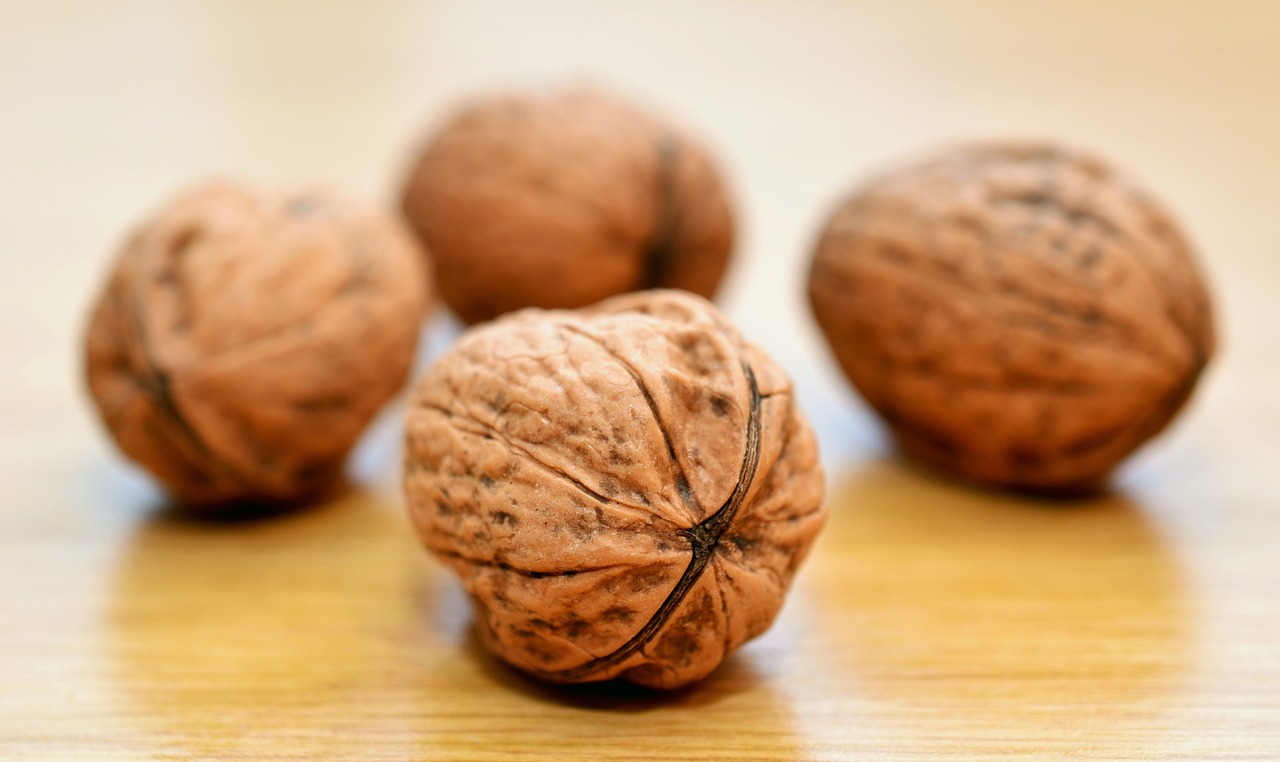Hairless Rats & Sphynx Rats
Hairless rats, or Sphynx rats, are a very special type of bald pet rat. Owners across the world love hairless ratties, as they don’t produce shedded fur like most other rats, and are particularly favorable for people who have allergies to pets. They are very unique, and may have slight traces of hair or fuzz, depending upon the genetics that they have and the type of hairless rat they are.
True Hairless Rat or Sphynx Rat
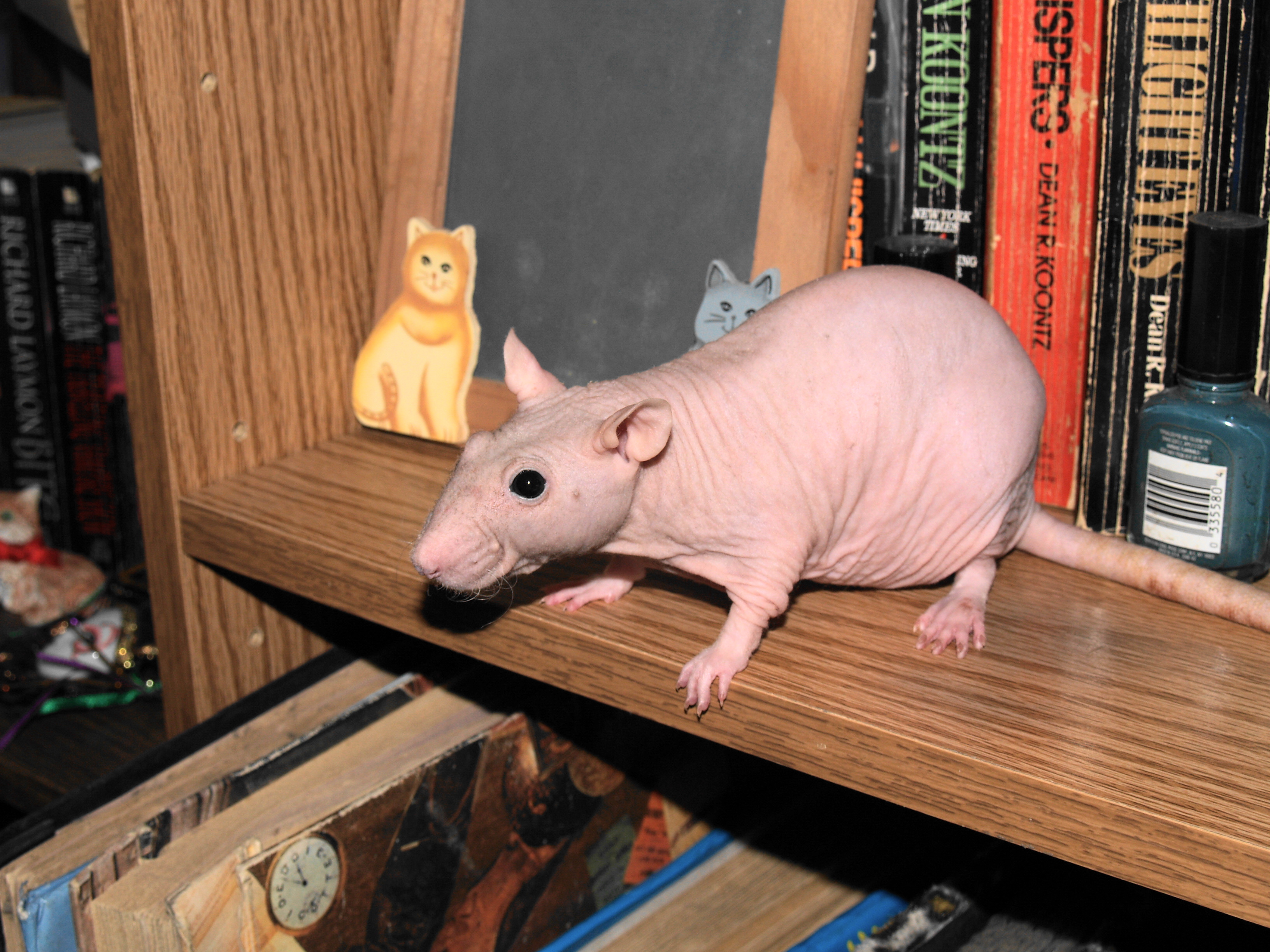
Luka the Hairless Rat. This rat has whiskers, which means it is not a true hairless. However, you can see how clean the body is on this specific specimen, giving you a good idea of what a true hairless would look like. Photo Credit: Winona Morris via Flickr
A true hairless rat has no fur on their bodies at all; no whiskers, no brow lashes, no body fuzz. They are flat out hairless. These rats are actually quite rare as opposed to the normal “hairless” rat that you tend to see in the homes of rat enthusiasts. Their genetics are actually very different from those faux hairless rats, as well.
In true sphynx rats, the genetic makeup results in absolutely no fur at all; the rat won’t even have whiskers as long as the genes that produce this trait are decently concentrated within the rat’s bloodline. This is not true for the faux hairless double rex rats; they do produce whiskers and eyebrows, at the very minimum.
Double Rex and Patchwork Hairless Rats
Of all of the hairless rats out there, these are the most common and are usually the rats that people refer to as hairless. They are in fact not hairless, and it is not a genetic mutation that produces no hair at all. It is simply a mutation known as the rexing gene, which simply strengthens to the point of lost hair.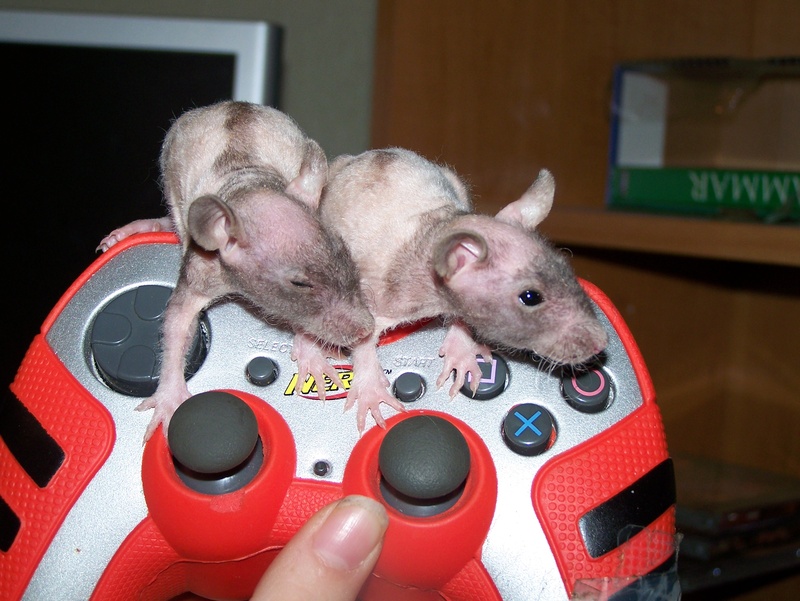
As rexes are bred and the gene is strengthened, there will be a noticeable hair thinning among the offspring. The first stop between rex and hairless is a rat with some thinning and balding; known as a patchwork rat.
As the hair loss becomes more obvious (not in age, but in strength of the rexing gene), the rat will become over 50 percent bald with patches of fur. This then takes the rat from a patchwork to a patchwork hairless.
The third stop is a rat with almost no patches of fur, but instead peach fuzz. This occurs because the strength of the gene produces a coat that just cannot maintain itself. It is incredible thick, brittle, and kinked. The remaining hairs, a peach fuzz, are about the only hairs that can grow.
The final stop is a rat that has such strong rexing that it possesses virtually no hair at all other than its whiskers or brow hairs; perhaps a hair off of that cute little face mole that they have.
How Do You Keep a Hairless Rat’s Skin Clean, Soft, and Healthy?

Baby Shampoo is the perfect shampoo for hairless and furry rats as it is gentle, tear free, and non toxic! Photo Credit: Stephanie-inlove via Flickr
Due to the nature of a hairless rat’s skin, it is necessary to take extra care of your hairless rats over your furred babies. You will need to wash the ratty in a mild, tear free, non toxic baby shampoo once every week or two. This will keep the skin clear and clean, reducing build up. It will also keep the rat’s skin hydrated and healthy.
You can buy wonderful name brand baby shampoos for much less than you would “special small pet shampoos”, and they will ultimately be better for your hairless rat’s sensitive skin. I have even used the cheaper store brand baby shampoos for my rats with positive results. Generally, off brands are simply the same ingredients made by a different manufacturer; and this is true with many baby shampoos. If you are instead out to purchase a big name brand, then you might want to go with a label like Johnson & Johnson. They have a wide variety of products, and their traditional tear free gentle baby shampoo is what I would recommend.
Why Does My Hairless Rat Feel Like It Is Hot with a Fever?
If you are new to hairless rats, you might notice that your hairless rat feels much warmer, or even hot, as compared to your furry ratties. This is because hairless rats have to maintain a higher body temperature in order to stay warm, as they have no fur. They feel like little heaters, and it can be worrisome for a new owner. Just know that a hairless rat is supposed to feel like it is hot. This is completely normal for a hairless whether it is a true hairless or a double rex hairless. Both of them must be able to compensate for the lack of fur.
Does a Hairless Rat Require a Special Diet to Be Healthy?
Since hairless rats have no fur, they must work harder to regulate their body temperature as we have just mentioned. Since their bodies work harder than a standard rat’s, they will need an extra boost in their diets. Their metabolisms are much faster, meaning they burn more calories and require a bit more fat in their diets. By ensuring that you have a proper amount of fatty foods in the diet, your hairless rat will be just fine. Ensure that the hairless rat ALWAYS has access to food. While this is recommended for any rat, it is truly necessary for hairless rats. You can think of them as the hummingbirds of the rat world; always eating, and always needing to eat!
